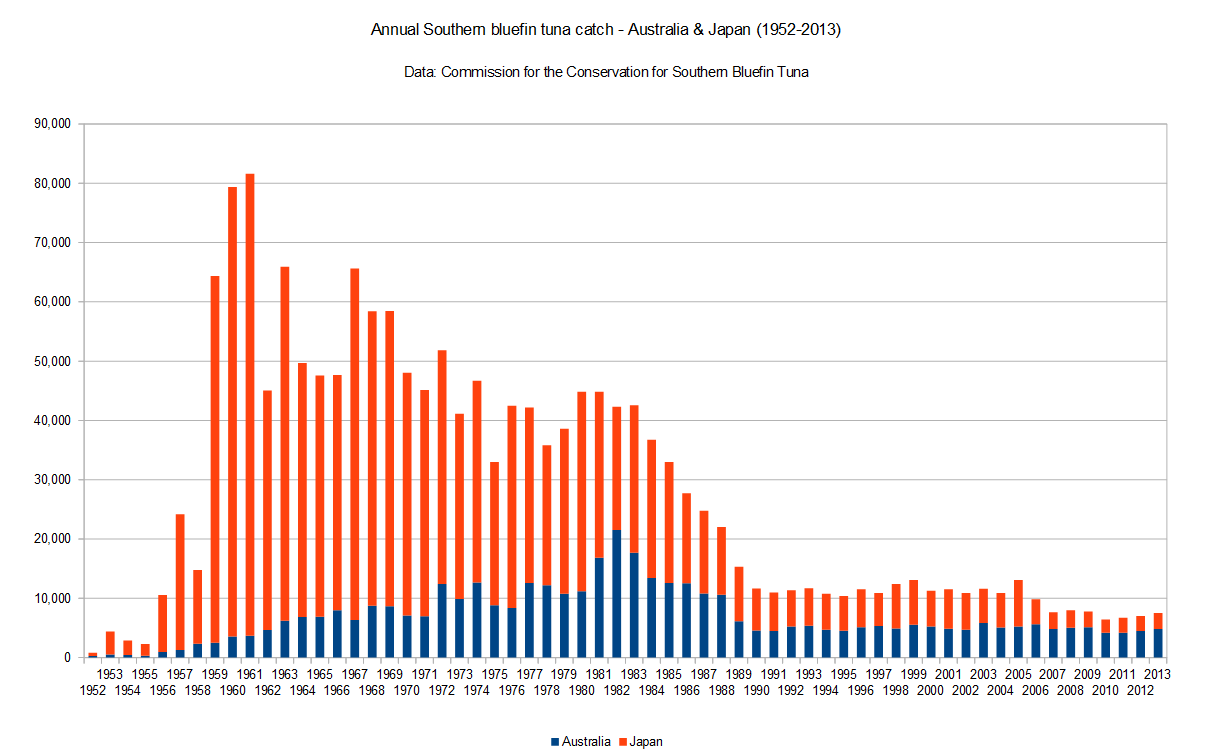Migration Dynamic of Juvenile Southern Bluefin Tuna
By: Julia Saltzman, SRC Intern
Large-scale migrations are crucial to many different marine species. In southern bluefin tuna, this life history trait is critical for sustaining their valuable fisheries, and as such there are many scientific research programs designed to monitor the management of the species. Telemetry technology (remote tracking of spatial locations and movements) has made cycles more generally observable, however quantifying variability and plasticity of migration schedules still remains a challenge. In this study from Patterson et al. (2018), movements from 110 individual juvenile southern bluefin tuna were estimated from the period of 1998-2011. The authors found that individuals demonstrated considerable variability in migratory patterns between the years. Patterns observed that juvenile southern bluefin tuna progressively spent less time in shelf waters, and the moved east, rather than west into the Tasman Sea for a higher period then heading west into the India Ocean. In addition, it was found that the further southern bluefin tuna move from the Great Australian Bight (GAB), the more time they spend migrating. This study also determined three areas associated with the residency of juvenile southern bluefin tuna. These areas of residence were far different from the known areas of residence in the past. The productivity in these residency regions displayed a seasonal cycle.

This study asserted that much like other large marine animals who use temperate latitudes, juvenile southern bluefin tuna also undertake long distance and large-scale migrations. In addition, while fish were observed to migrate to key areas, their patterns, especially in the winter months, varied both on an individual and yearly basis. Researchers suggested that for fast growing, immature, large, predators, such as those studied here their migration may be related to environmentally availability, rather than cues which are fixed such as day length. Other environmental factors also impact the migrations; for example, because the fish is a visual predator, they prefer to hunt in clear waters away from areas of high turbidity and high primary productivity. In addition, it is likely that seasonal populations of small pelagic fish in the GAB coincide with the migration of the southern bluefin tuna.

Through the use of tag deployment and geolocation of juvenile southern bluefin tuna, and Hidden Markov Models to estimate when individuals were migrating, important insights were obtained on the individuals within the same period and within individuals across multiple years. The complexity of migration routes appears to be related to sea surface temperature, productivity, and the physiology of the individual southern bluefin tuna. This report provides scientists and fisheries managers with the information to effectively manage southern bluefin tuna. This species, which has faced massive declines in the past due to poor management strategies, is now much better managed due to an understanding of their varying migratory patterns, especially those of juveniles.

Work Cited:
Patterson, T. A., Eveson, J. P., Hartog, J. R., Evans, K., Cooper, S., Lansdell, M., … & Davies, C. R. (2018). Migration dynamics of juvenile southern bluefin tuna. Scientific reports, 8(1), 14553.



